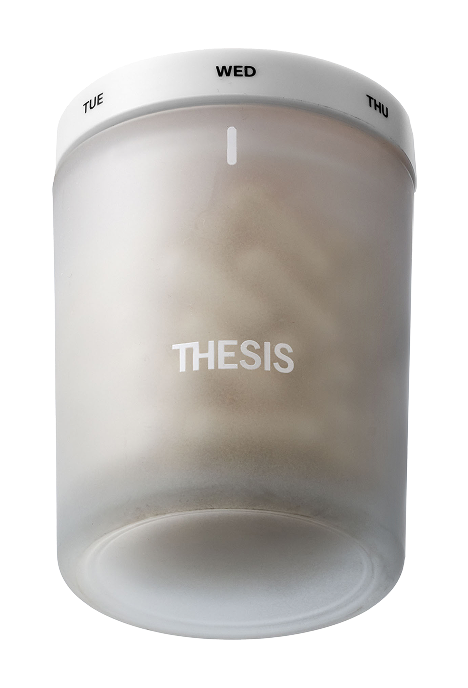We take testing to another level—because that's what it takes to own your mind.
We take testing to another level—because that's what it takes to own your mind.
Today, we’ve conducted thousands of trials, and collected data from 7.3 million customers and counting. Our 5-part formulation process builds from all of this so you can trust that when you choose Thesis, you’re not guessing with nootropics. You’re choosing a cognitive conditioner that'll actually work.
Guaranteed results or your money back.
We’re confident in our products and their precise blend of ingredients because they’ve gotten real results for millions of customers. We offer a money-back guarantee that a Thesis product will work for you—and if an existing product we offer won’t, we’ll work with you to develop one that does.
Clinically researched. Precisely formulated.

other nootropics
Clinically researched. Precisely formulated.
Higher than other nootropics

Many nootropics make baseless claims.
We conduct real-world testing.
We conduct continuous beta testing and open-label trials to assess real-world effectiveness. Our studies are designed with the rigor and ethical standards typically reserved for pharmaceutical clinical trials.
with real customers.
studies when formulating.
by 7.3 million customers.
We’re devoted to continual improvement.
Our process is driven by two questions: why and how. We’re constantly reevaluating every decision we’ve made, and asking new questions in search of better outcomes for those who love and trust Thesis.
Here are the latest questions that drive what we do:
Modern life hijacks attention with constant pings, scrolls, and dopamine spikes. Clarity targets this head-on by combining Citicoline, Lion’s Mane, and 7,8-DHF to promote neuroplasticity, acetylcholine signaling, and dopamine regulation. This stack helps support distraction resistance, sustained attention, and the deep work required for modern cognitive demands.
Cognitive health isn’t just about a better workday. It’s about protecting what makes you you. From dopamine and Acetylcholine for daily drive and focus, to Sulforaphane, Spermidine, and mitochondrial activators for long-term resilience, our formulas are designed to support both high performance today and brain longevity tomorrow.
Stress Reset combines Shoden® Ashwagandha, clinically shown to reduce cortisol by up to 67% and occasional anxiety by 59%, with Zembrin® and Salidrosides for sharper mood regulation and cognitive flexibility. This version supports serotonin, dopamine, and alpha wave activity, without sedation or crash.
Here’s what we’re reading, if you’re curious, too:







